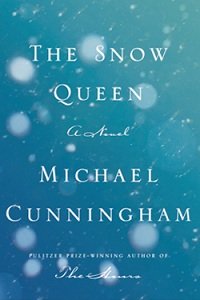The new novel by Michael Cunningham, The Snow Queen, takes its name from the famous fairy tale by Hans Christian Andersen, telling the story about love and how its power can eventually prevail over any adversity.
Cunningham is known as the author of several critically acclaimed novels, including:
- The Hours, postmodern reworking of Virginia Woolf’s Mrs Dalloway.
- Pulitzer Prize-winning A Home at the End of the World.
- Specimen Days, heavily based on Walt Whitman’s poetry.
However, in this work Cunningham steps from what is perceived by many as his specific approach of reworking original plots and concepts in a new way, which he used, for example, in his reimagining of Mrs Dalloway in The Hours.
This time he takes from the original nothing much but the title, the topic of love in a very general sense, and all-pervading symbolism of winter, cold, and ice.
An Icy Slice of Life
 The Snow Queen tells the story of two brothers going through midlife crisis. Both of them were considered to be very talented in their early years, but didn’t manage to find their places in life and reached middle age without ever making decisions or really achieving something. Barrett knows his way about poetry and knows more about Western philosophy than an average college professor, but works in a vintage clothing store, while Tyler, although possessing a real gift and inclination for music, remains an almost unknown musician and spends the majority of his time in his shabby apartment with Beth, his girlfriend dying from cancer.
The Snow Queen tells the story of two brothers going through midlife crisis. Both of them were considered to be very talented in their early years, but didn’t manage to find their places in life and reached middle age without ever making decisions or really achieving something. Barrett knows his way about poetry and knows more about Western philosophy than an average college professor, but works in a vintage clothing store, while Tyler, although possessing a real gift and inclination for music, remains an almost unknown musician and spends the majority of his time in his shabby apartment with Beth, his girlfriend dying from cancer.
In the beginning of the novel Barrett sees a vision while walking through the Central Park. He doesn’t know what it is: a mystical experience, a vision, a UFO, an early sign of epilepsy or a misplaced case of Aurora Borealis. He doesn’t tell anybody, including his brother, about it, because he is not ready to allow Tyler to worry about him. Later he often wonders how this experience influenced his life and what happens around him, looking for the signs of this influence everywhere, for example, in the remission Beth undergoes soon after.
Changes in Style
The Snow Queen if different from earlier novels by Michael Cunningham not only because here he explores his own plotlines instead of reworking the works of other people in postmodern manner. His style differs quite a bit from the previous examples of his writing.
It seems that Cunningham’s extensive study of Virginia Woolf’s creative work did a lot of good for his skills. Before he sometimes looked helpless when trying to express emotion – he tended to deepen into sentimentality and drown the reader in the flow of purple prose. In The Snow Queen this job is done by the stream of consciousness, which bears strong resemblance to Virginia Woolf’s, but still possesses unmistakable personal quirks characteristic of Cunningham. It allows him to tap directly into his characters’ feelings and emotions, without forcing the reader to deal with never-ending descriptions. All in all, it is certainly a turn for the better.